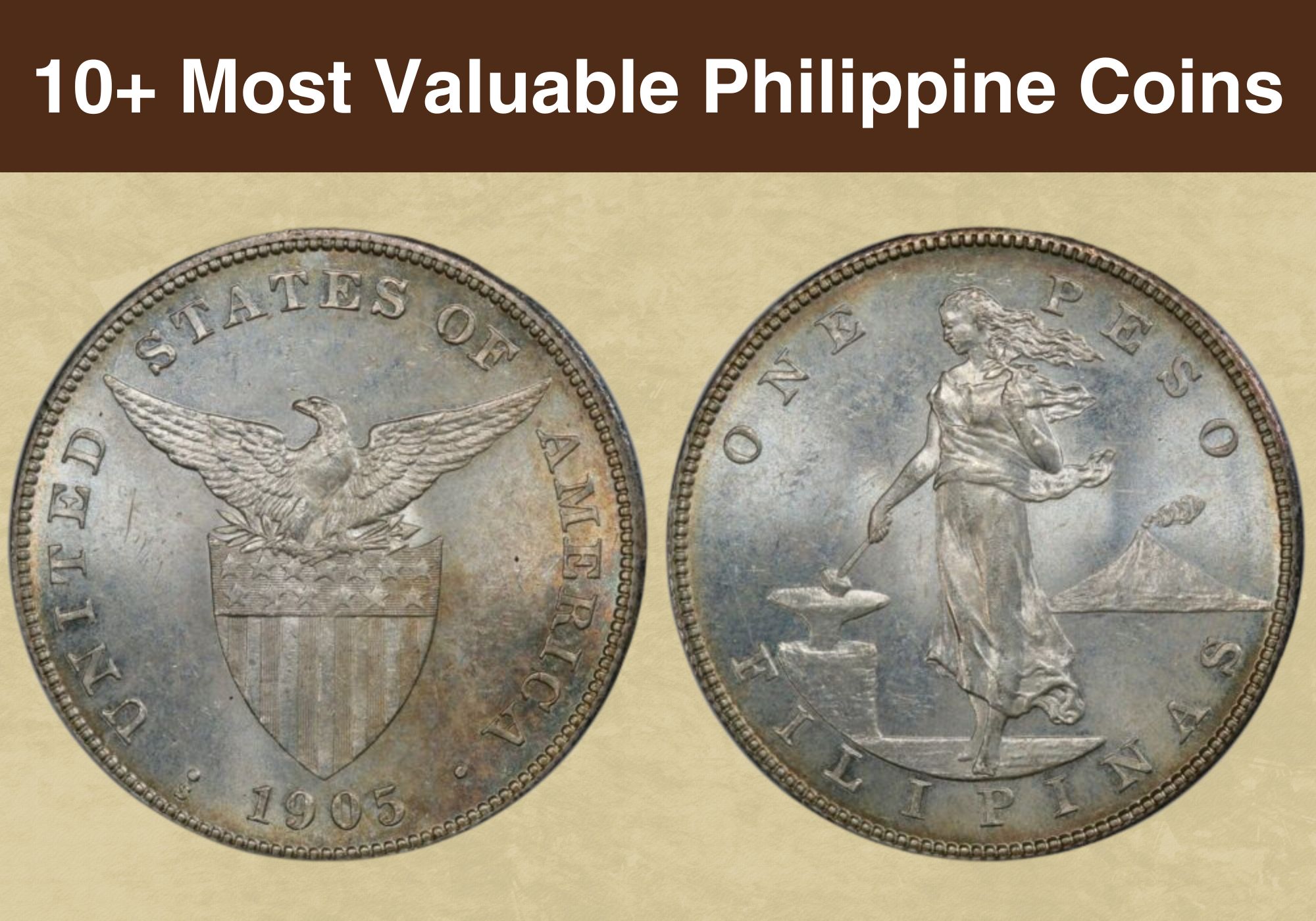
Are you interested in buying or selling Philippine coins?
These beautiful coins can be worth a fortune depending on factors such as rarity, condition, and historical significance.
In this article, we explore some of the most valuable Philippine coins to pay attention to. Knowing which Philippine coins are worth money can help you make smart investment decisions, whether a seller or buyer.
Let’s get started!
A Brief History of Philippine Coins
The history of the Philippine Peso reflects the country’s path from colonization to independence. Before the Spaniards occupied the Philippines in 1521, early Chinese traders, local Filipinos, and others from neighboring countries used barter trade as the main medium of exchange.
Later, cowry shells were adopted as an informal currency, after which tiny gold pieces known as piloncitos became the earliest coinage in the country. The Spaniards, who occupied the Philippines from 1521 to 1897, formally introduced coins, including macuquinas and cobs.
Due to a biting shortage of small change, the ruling Spanish government introduced rudimentary bronze coins known as barillas worth one centavo.
The Spaniards brought coins from some of their other colonies into the Philippines. These foreign coins were counter-stamped to be used as legal tender in the country. Under the Spanish Occupation, the first bank in the Philippines, the El Banco Espanol Filipino de Isabel II, introduced paper money.
When the Philippines briefly declared independence from the Spaniards in 1898, the new government sought to replace the Spanish-Filipino peso with a distinctive Philippine currency. As part of the Malolos Constitution, the country’s first president, General Emilio Aguinaldo, introduced two-centavo copper coins and notes in 1,5 and 10 pesos.
However, this currency was short-lived and removed from circulation the same year the Americans colonized the Philippines in 1898. The American Occupation of the Philippines began formally in 1901.
The Americans introduced modern banking and pegged the Philippine Peso to the U.S. dollar so that 2 pesos were equal to 1 USD, a system that powered on until the Philippines gained independence in 1946. Meanwhile, the American colonists minted coins in 1 peso and half-centavo denominations. All currency was also changed from Spanish to English.
The Philippines gained independence in 1949 after the Japanese Occupation. Soon after independence, the government reintroduced a Filipino currency written in the Filipino language, featuring the portraits of various national heroes.
By 2010, the Philippines central bank had issued coins in denominations of 1, 5, and 25 centimo, while the 1, 5, and 10 piso were introduced in 2018 for general circulation. Today, the Peso is the Philippines’ formal currency.
Let’s now look at the most valuable Philippine coins.
Most Valuable Philippine Coins Worth Money
1. 1799 8-Escudo
This coin was minted in 1799 during the Spanish Occupation. It is one of several coins auctioned as a lot in 2021 at the Leon Gallery in the Philippines.
The coin was made in Columbia at the Casa de Moneda in Popayan. On the obverse, it features the portrait of King Charles IV of Spain. On the reverse are the words ”In utroq felix auspice duo.” which means ‘’With happiness under the look of God.”
The 1799 8-Escudo contains 27 grams of fine gold, but the coin’s price is less exorbitant than expected. As mentioned, this coin was sold as part of a lot; therefore, we can only talk about the lot’s combined price. Read on for details on how much the lot was sold for.
2. 1809 8-Escudo
This was the second coin in the 2021 lot sold at the Leon Gallery. It also bears the portrait of King Charles IV on the obverse, but more importantly, the name of his successor, Ferdinand VII, is also included on the coin.
The coin bears more or less the same characteristics as the 1799 8-escudo. For example, it was minted in Columbia, weighs 27 grams, and contains 21 carats of gold.
3. 1818 0.875 Fine 8-Escudo
This was the third coin in the Leon Gallery lot sold in 2021. It is also an 8-escudo, bearing the date 1818. It was minted in Columbia, Bogota.
This coin is the same size and weight as the other two; it contains 21 carats of gold as well and features the portrait of Charles IV and the name of his successor Ferdinand VII who by this time had already been on the throne for five years.
All three coins, i.e. the 1799, 1809, and 1818 8-escudo, were auctioned for about $11,000 at the Leon Gallery. These early coins are more affordable than U.S. Philippines pesos and would make a great addition to any collection.
4. 1868 Gold 4-Peso
Aside from the lot of three Philippine coins auctioned at the Leon Gallery in 2021, another set containing 26 4-peso was also on auction.
These coins were minted in 1868, about seven years after the first mint had opened in Manila, Philippines. This was the first time the country was minting its currency and the first time the word Filipinas appeared on the new currency.
This impressive and historically significant set was auctioned for 19,500 in 2021 at the Leon Gallery in the Philippines.
5. 1907 US-Philippines Proof Peso
Traditionally, mints worldwide have struck proof coins for archiving and as special sets for collectors; these coins are not meant for circulation, so only a few are minted.
Besides, proof coins are more demanding than regular coins, another reason why Mints only make a few examples.
This 1907 bi-national proof peso is one of the scarcest and most valuable Philippine coins. Only two examples exist today—one was sold privately, while the other is owned by the Museum of Money in Manila.
The coin was minted in the United States as part of the bi-national coins between 1903 and 1908. On the obverse, the coin features the full image of a busty Lady Liberty so that you can see her from head to toe.
On the reverse is the American eagle perched on the iconic shield. The name Philippines appears on the obverse while USA is printed on the reverse.
Each proof made in 1907 was struck on a different planchet, which is unique in size and fineness.
This particular example is the smallest of the two existing pieces, and it was sold for $1 million in a 2018 auction.
6. 1918 U.S. Philippines Mule
This is an interesting error coin struck in 1918 at the San Francisco Mint. A mule error is extremely rare and occurs when a coin’s obverse and reverse designs are a never-been-seen-before combination.
In this case, the obverse was struck using a 20-centavo die, while the reverse was struck using a 5-centavo die. The obverse features the portrait of a seated gentleman, while the reverse bears an image of the American Eagle perched on a shield.
This one-of-a-kind coin was graded MS64 by the Professional Coin Grading Service. It boasts excellent strike and impressive lustre for such an old coin.
When it came up for auction in April 2014, the 1918 U.S. Philippines Mule coin was snapped up for $41,125.
7. 1905-S US-Philippines Peso Straight Serif
There are two variations of this coin. This one is the straight serif peso, and the other is a curved serif peso, and both came up for auction.
The straight serif peso struck in 1905 is the rarer of the two. The PCGS graded this coin MS63, just two points to gem quality, indicating that the coin is in pretty good shape with its detail and luster intact with no scratching and denting.
This coin came up for auction in 2020 and was sold for an impressive $43,200.
8. 1907-S US-Philippines Peso
In addition to proofs, the San Fransisco mint also struck circulating U.S. Philippines pesos bearing a mint mark S. Some of these coins never circulated despite being struck for general circulation.
A good example is this piece of a U.S. Philippines Peso graded MS67 by the PCGS. This grade is gem quality, meaning the coin has achieved the highest quality standard, making it highly collectible. Any marks on the coin are very subtle and cannot be seen by the naked eye.
The mint at San Francisco struck more than 10 million of these pesos in 1907, most of which were released into circulation. So, finding uncirculated, gem-quality coins can take time and effort.
According to the PCGS, only four 1907-S U.S. Philippines Pesos have been certified and graded MS66. There is also one graded MS66+ and another MS67.
When this piece came up for sale at Heritage Auctions in 2022, it fetched $31,200.
9. 1906 US-Philippine Peso
In 1906, the U.S. Mint struck about 200,00 U.S. Philippine pesos, but many were kept in Treasury vaults and not released into circulation. Eventually, these coins were melted down.
The mint decided to melt the silver pesos as their production was expensive and consumed a lot of silver compared to other U.S. silver coins, such as the popular Morgan dollar.
The mint made a few changes to minimize the cost of production of pesos. In 1907, these coins were made smaller and contained less silver from the silver coins the mint had melted earlier.
Due to these changes, pesos struck in 1906 are extremely rare, and those of a higher grader are even rarer. As mentioned, most were melted, while the rest were heavily circulated.
One rare example, graded About Circulated (A.U.), came up for auction in 2020 and was snapped up for $43,200.
10. 1905-S US-Philippines Peso
This is the second variety of the U.S. Philippine peso struck at the San Francisco mint in 1905. The difference between this and the other is the grading and the serif on the number 1.
While the first piece was graded MS63 by the PCGS, this one earned a grade of MS64. This one has curved serifs, particularly on the number 1 in the date, while the other features straight serifs. One thing these two variations have in common is that they are rare bi-national pesos.
Finding 1905 U.S.-Philippines pesos in good condition is extremely difficult. When the Japanese invaded the Philippines, owing U.S. Philippines money could easily earn you a death sentence, so many Filipinos buried their money underground.
The country’s humidity and salty water meant that these hidden coins would be ruined quickly, leaving very few pesos of good quality. You’d be lucky to find an uncirculated, mint-state specimen graded MS64.
One such example did show up for sale at the Heritage Auctions in 2022 and was auctioned for a whopping $60,000.
11. 1912-S US-Philippines Peso
After 1921, the San Francisco mint stopped minting pesos, with production only resuming in 1935. Production halted because demand for the Peso had waned significantly.
As such, only a few examples of the 1912 U.S. Philippines peso in mint state exist. In fact, the PCGS notes that only two known examples graded MS64 and only four existing gem-quality specimens.
This piece, graded MS64, came up for auction in 2016, fetching an impressive $40,000.
12. 1904-S US-Philippines Peso
The San Francisco mint struck about 6,600,000 pesos for circulation in 1904. Finding a peso from this year in a mint state is extremely difficult despite a relatively large mintage.
There are only two known examples graded MS65. This particular one has an impressive cameo patina with noticeable red, gold, and blue lustre only seen in gem-quality coins, making it highly sought-after.
At a January 2022 auction, a private buyer snapped up this coin for an enviable $31,200.
Summary
Philippine coinage is relatively modern, with the U.S.-Philippines coins dominating collectors’ interest. If you are lucky enough to find an ancient Filipina coin, it would definitely make a great addition to your collection. But, there is no doubt that bi-national pesos make up the bulk of the most valuable Philippine coins.

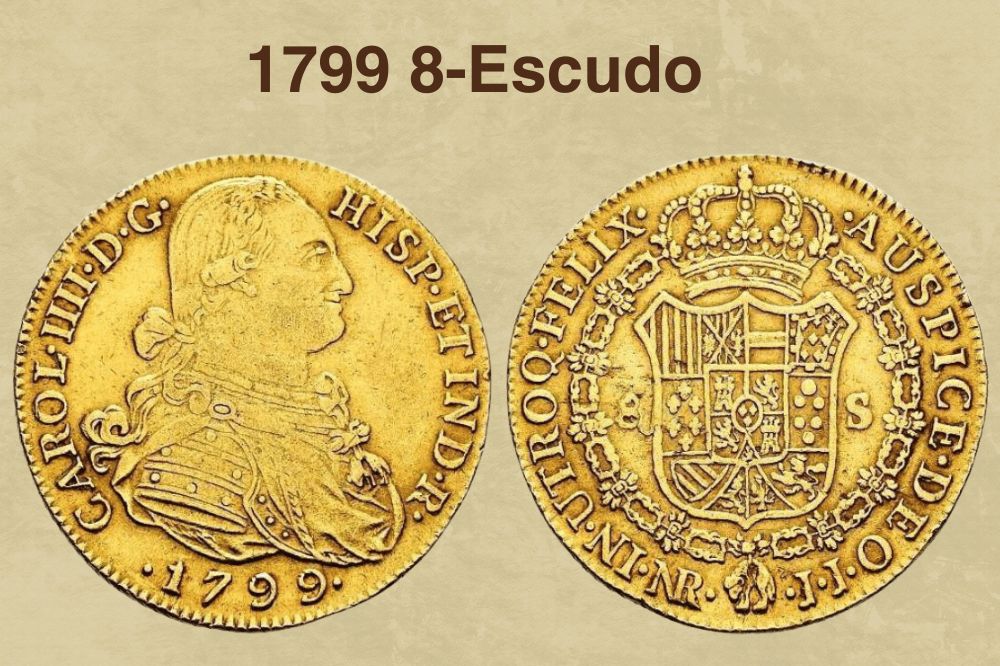
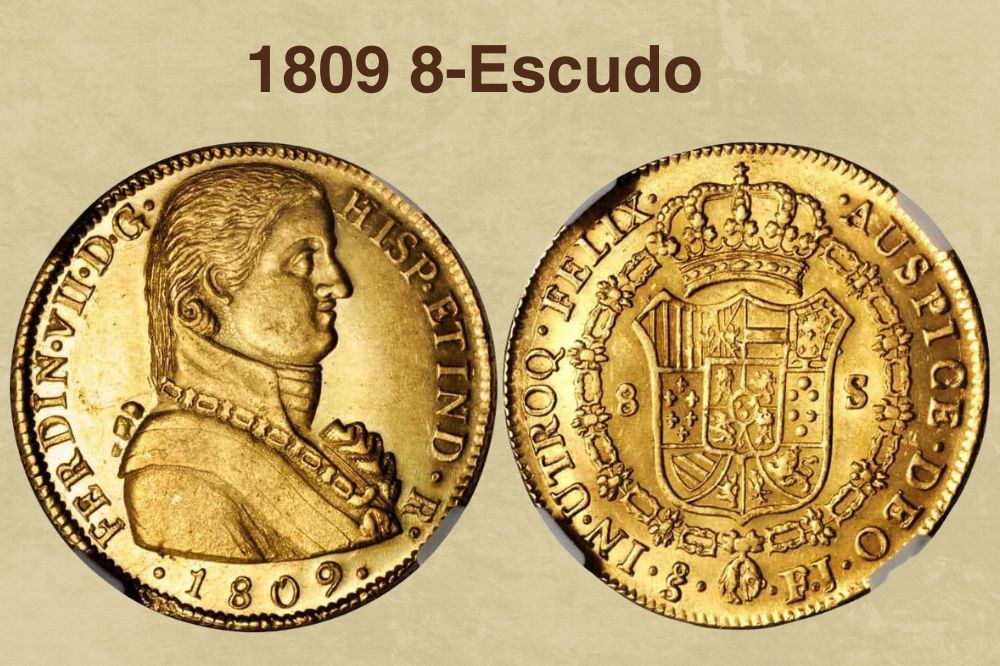
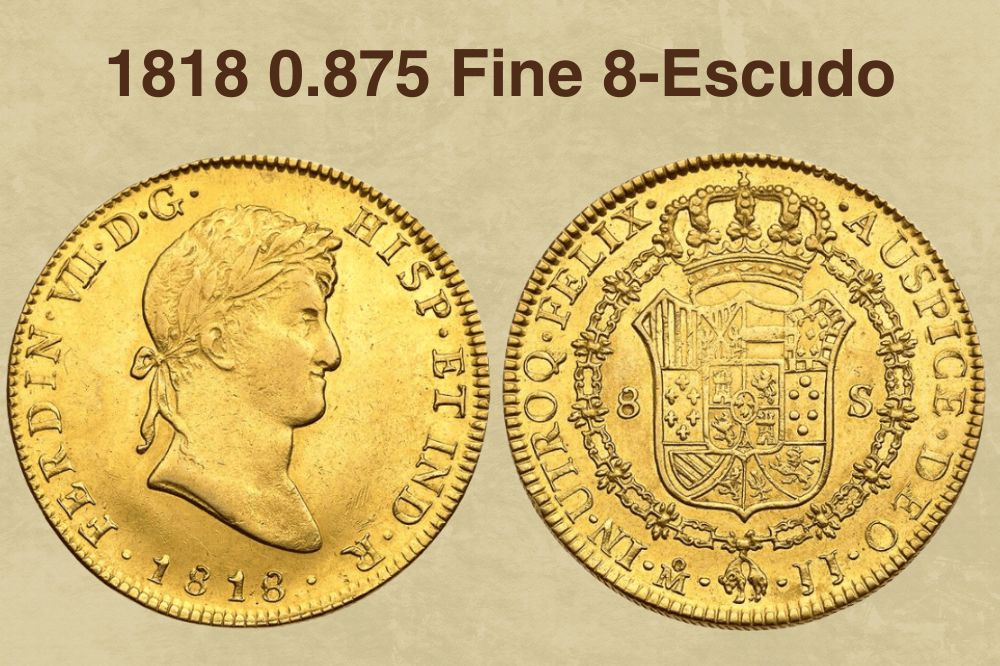
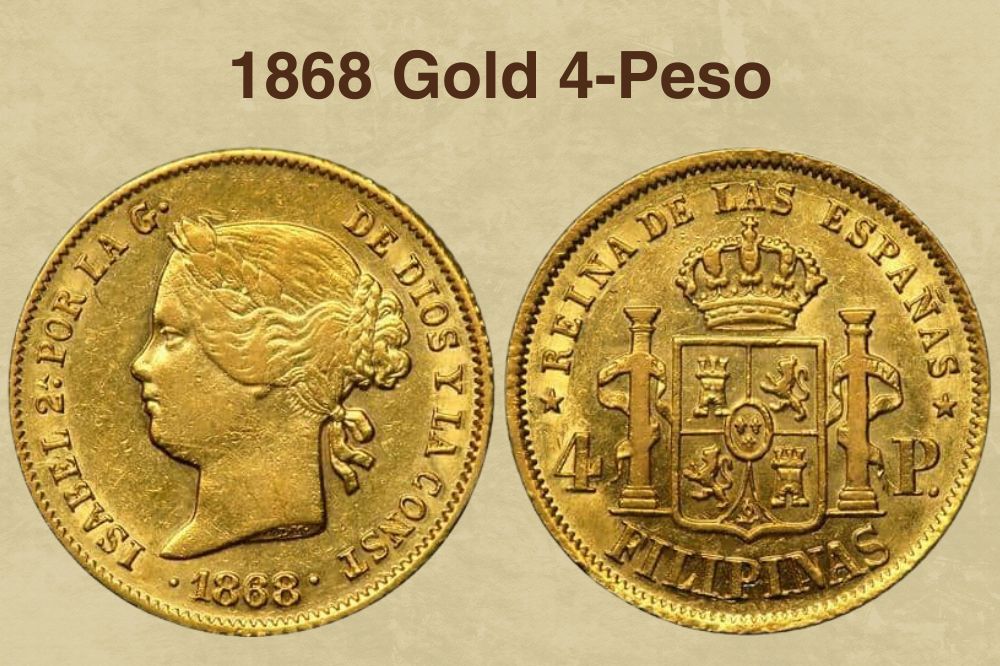
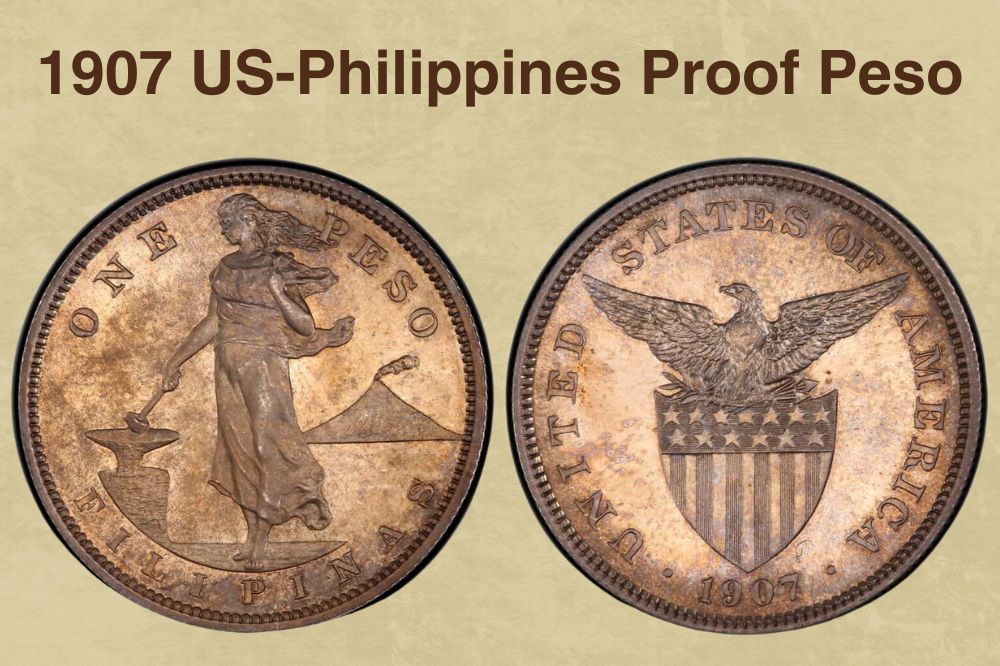
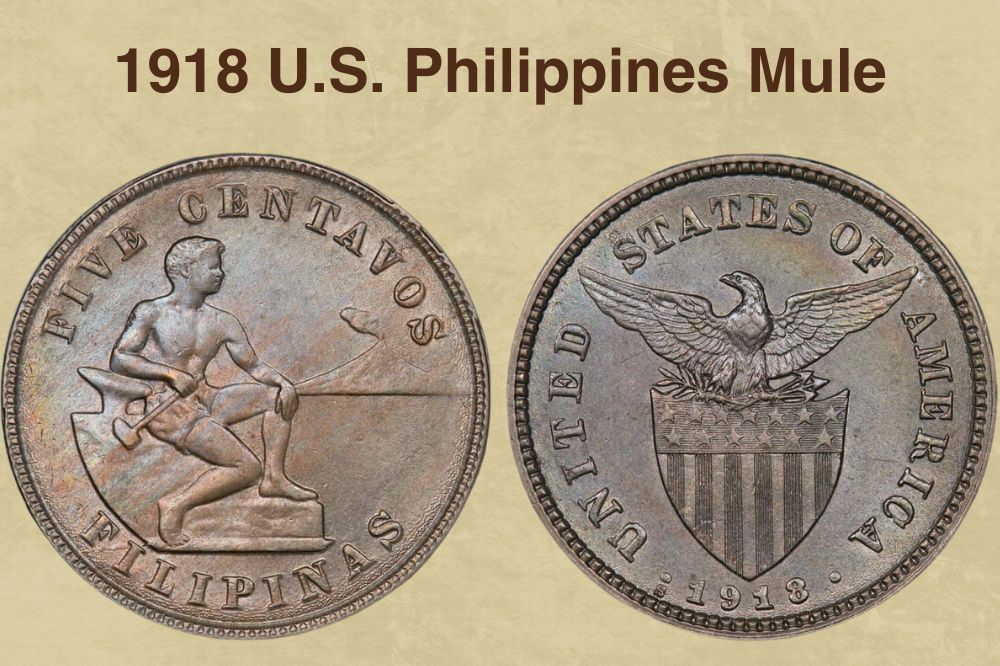
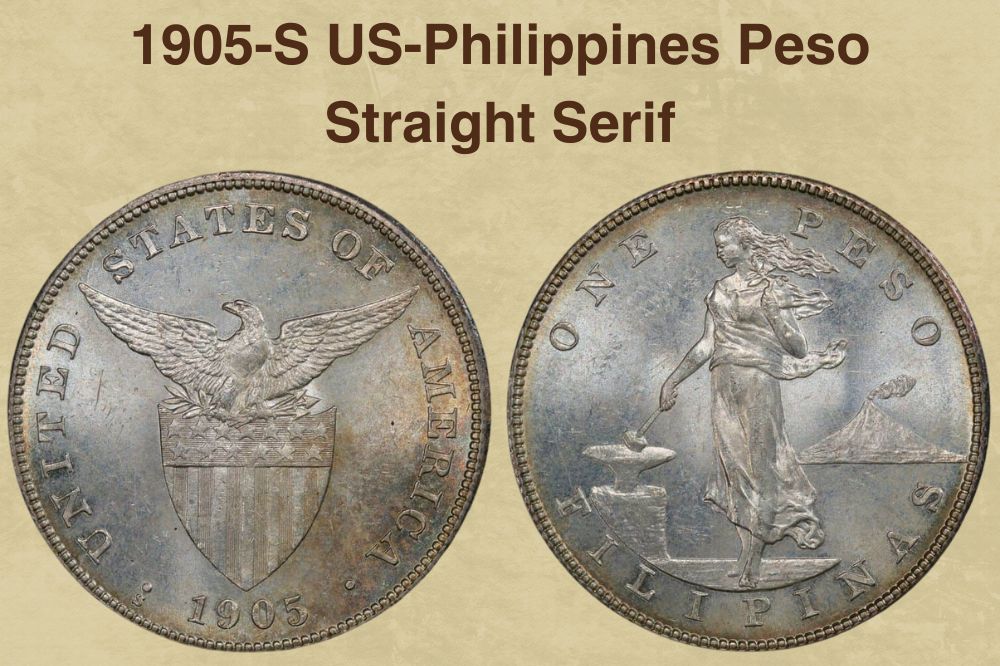
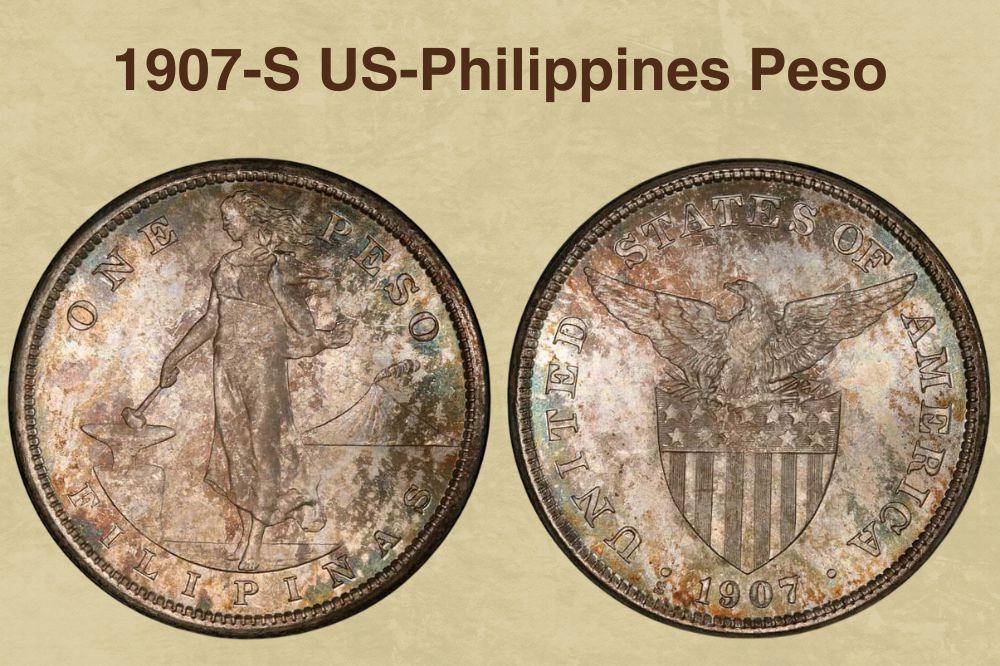
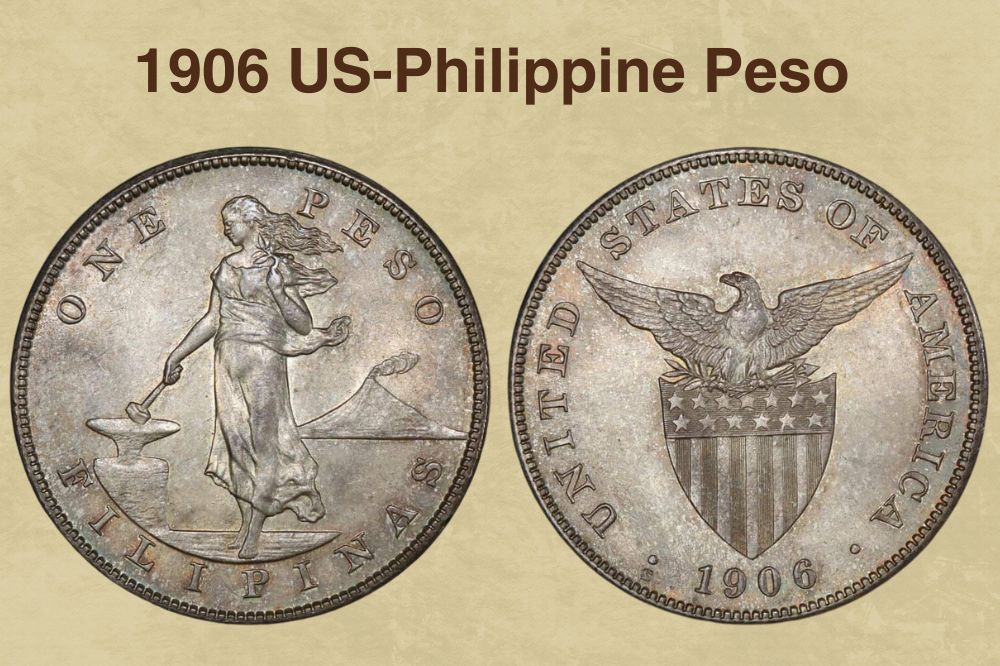
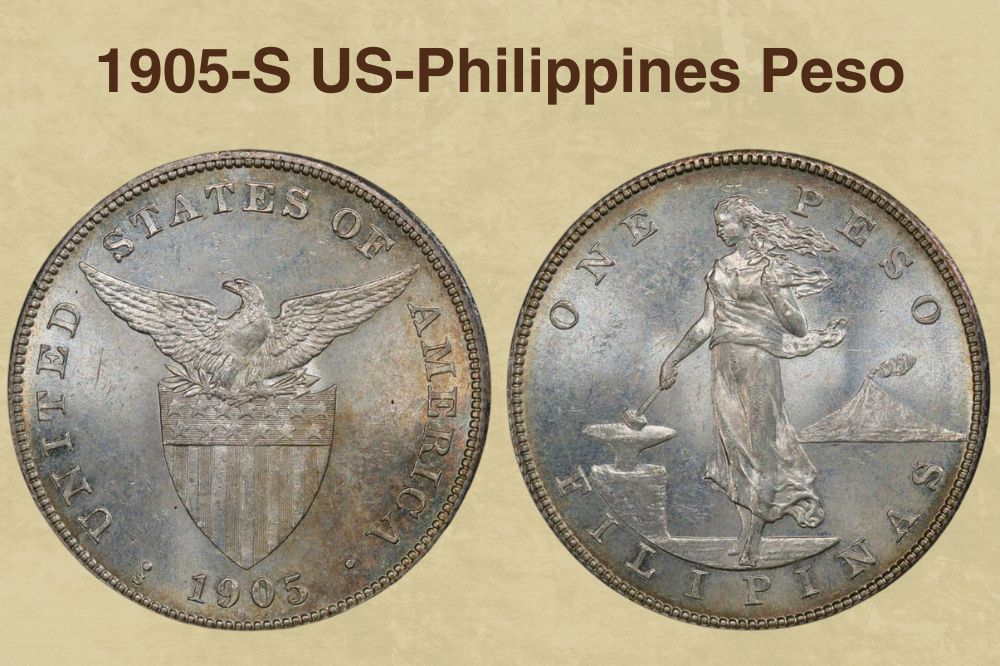
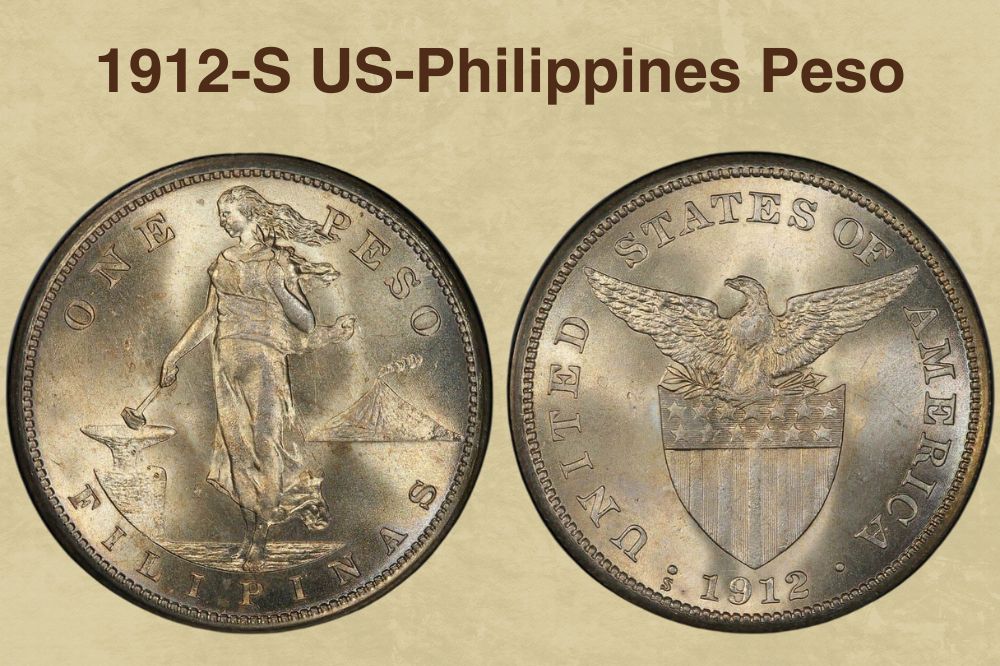
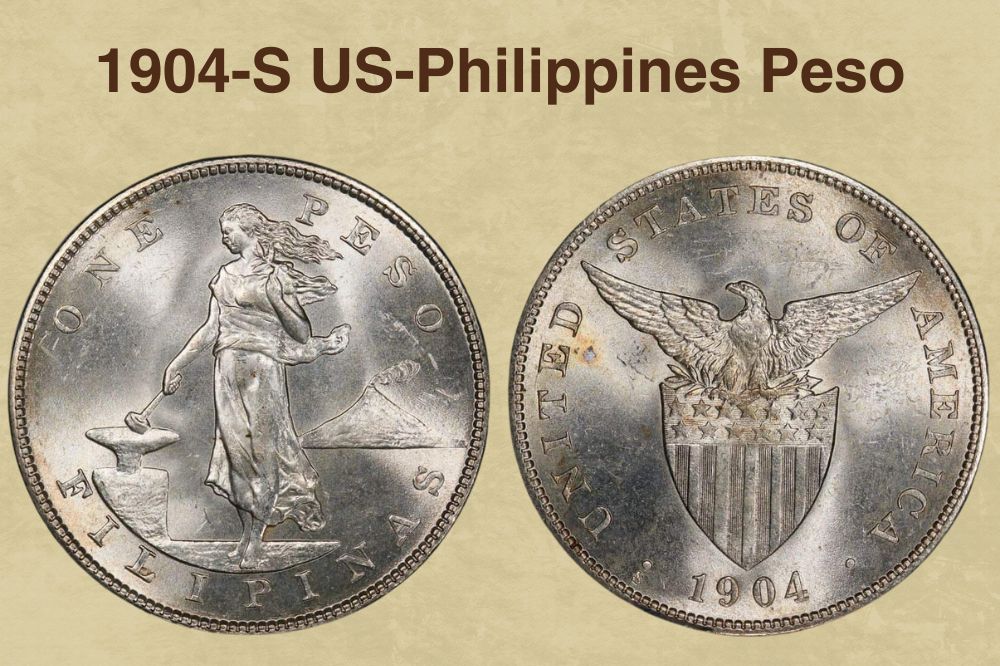
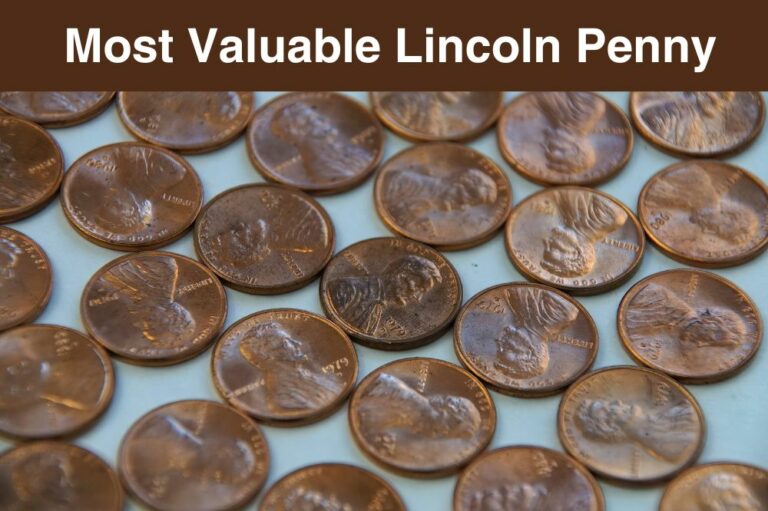
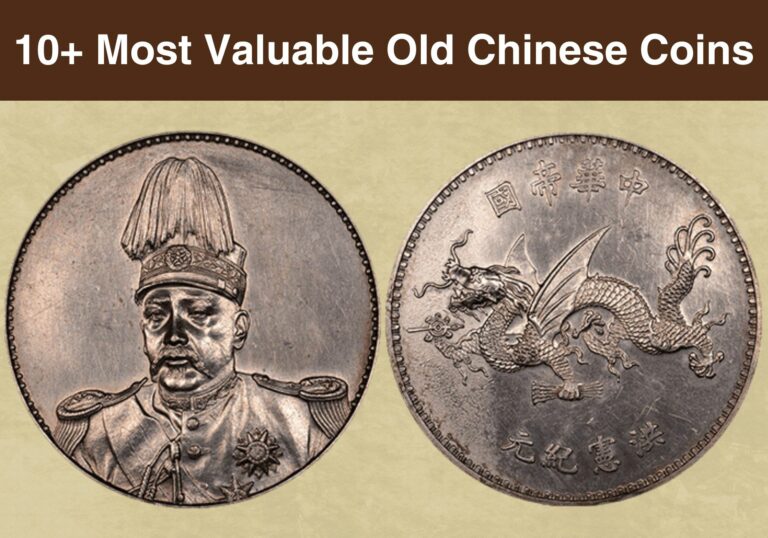
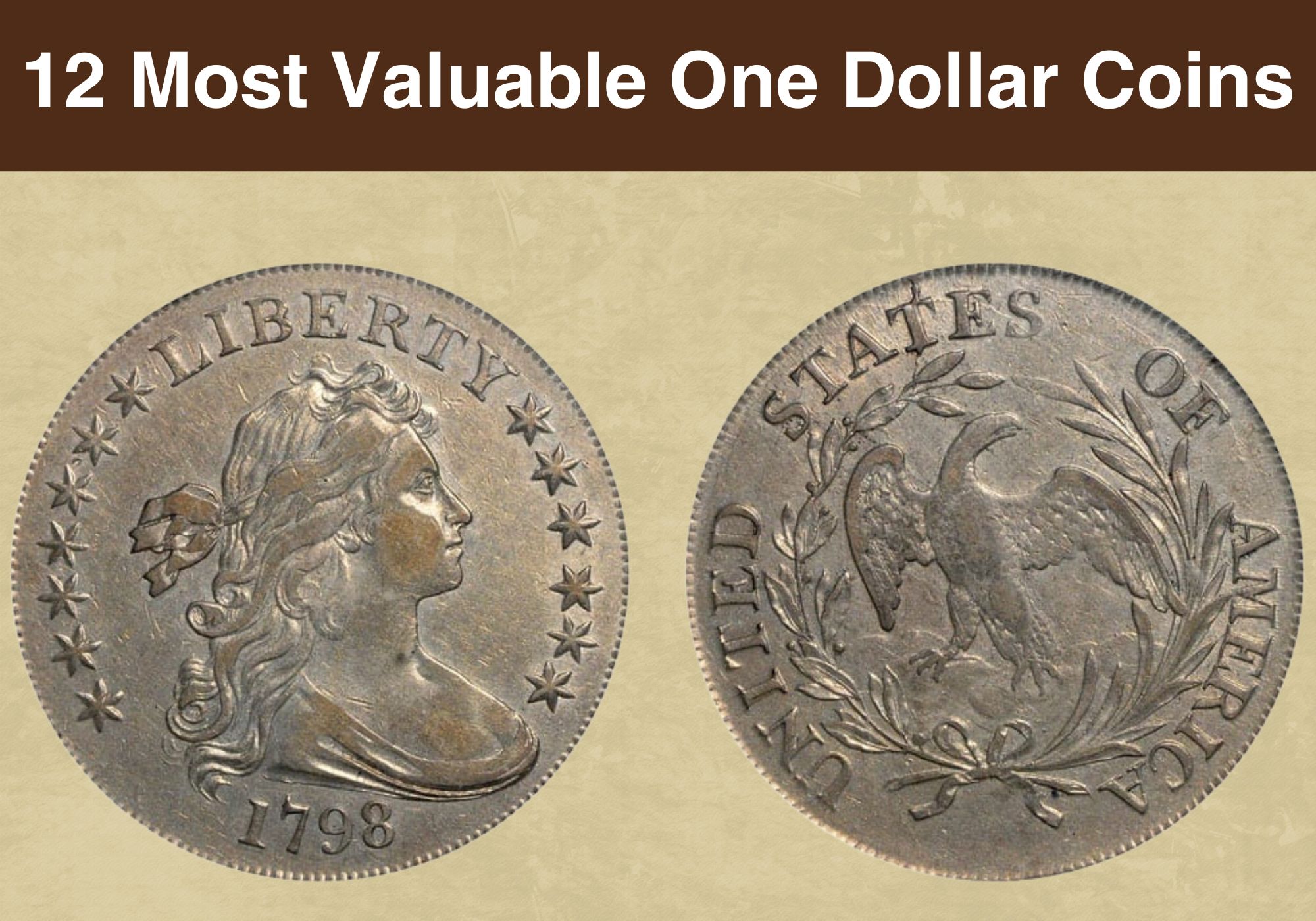
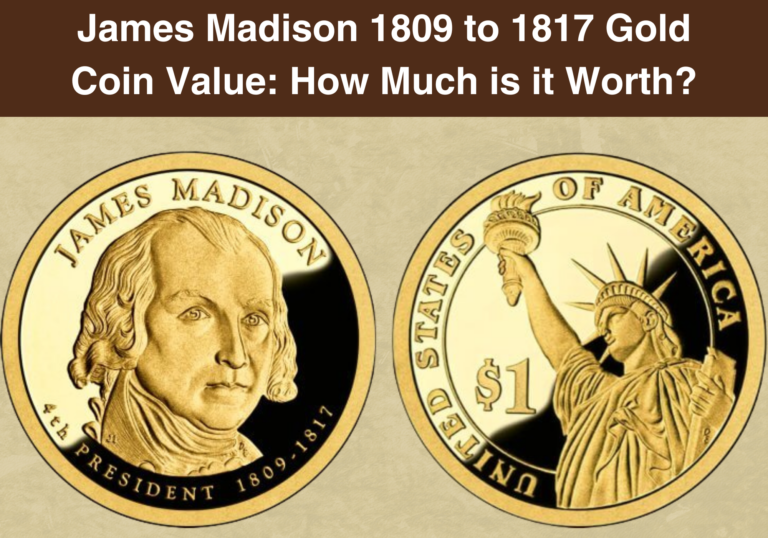
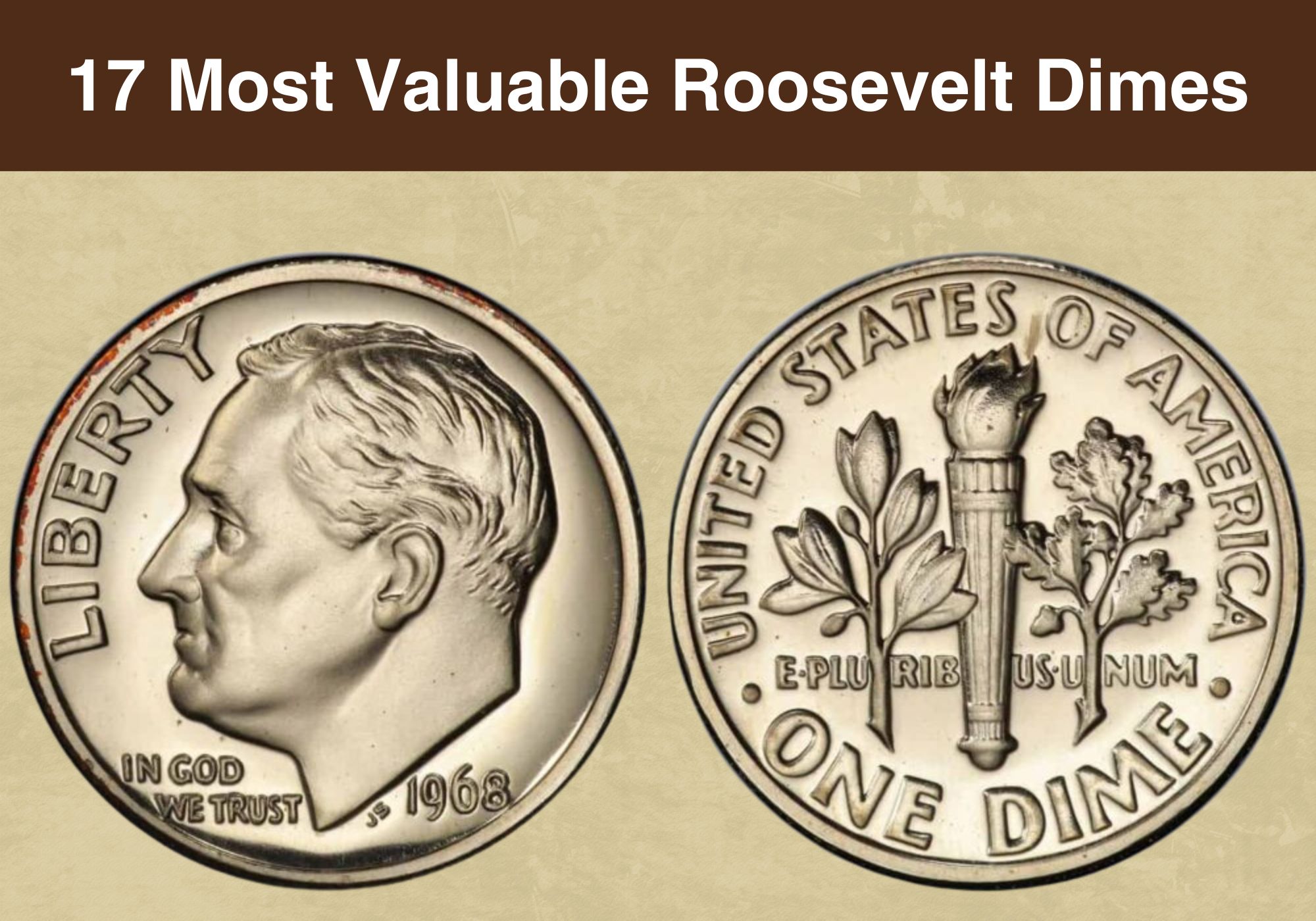

I have a rare coin US and Philippines coin 1907.
I have a rare coin Philippines coin 1960
Hello